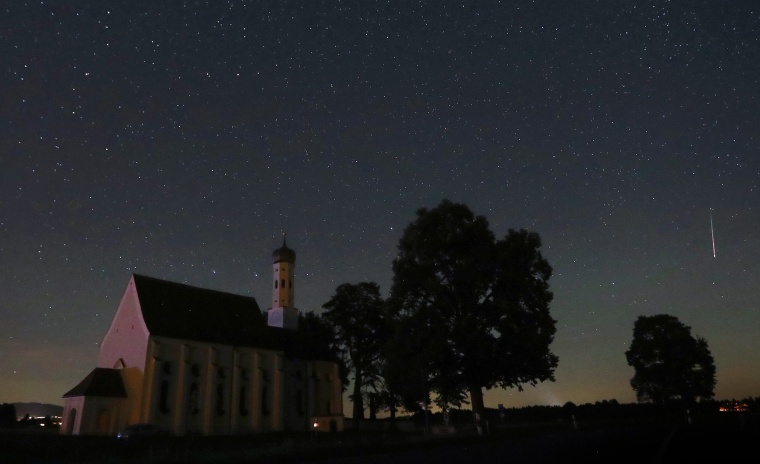Stargazers are crossing their fingers for a dazzling sky show this week, as the 2019 Draconid meteor shower returns to the night sky.
The annual meteor shower, which peaks on Tuesday, is expected to produce about eight shooting stars per hour. But there’s a small chance of a meteor outburst. That could raise the hourly tally to 100.
It’s impossible to predict precisely when or where the shooting stars will streak across the sky, so don’t bother trying to spot them with binoculars or telescopes. “When you observe meteor showers, you want to lie flat on your back and use your eyes,” said Bill Cooke, head of NASA's meteoroid environment office at the Marshall Space Center in Huntsville, Alabama. “You want to see as much of the sky as possible.”
You’ll also want to find a dark place, away from bright city lights that can make streaking meteors hard to see. “Normally the country is where you want to go to observe meteors — good, dark sky. But the moonlight is really going to interfere this year,” Cooke said, in a reference to the waxing gibbous moon, which turns full on Sunday. “This is not going to be like the Perseids, which knock your eyes out.”
Meteor showers are named for the constellation from which they appear to originate. The Draconids seem to emanate from the constellation Draco (the Dragon), which lies near the Little Dipper in the northern sky.
Meteor showers arise from the debris left behind by comets as they make their way around the sun. Comets are made of ice and dust, and when they near the sun, the heat melts some of the ice and liberates the dust trapped within. When Earth passes through a comet’s dusty trail on its orbit around the sun, we see a meteor shower. The bits of debris ignite when they hit the upper atmosphere, burning brightly but very briefly.
The comet Giacobini-Zinner is responsible for the Draconid meteor shower. Because it has circled the sun so many times, it has already shed much of its dust. Thus its tail is more sparse than other comets, meaning it doesn’t yield the same kind of spectacular showers — most of the time.
“The most important thing you need to know about the Draconids is that they are kind of an all-or-nothing meteor shower,” he said. “They either produce spectacular outbursts or meteor storms, or you would never know they were there.”
Want more stories about space?
- China's lunar rover has found something weird on the moon's far side
- Weird 'whiplash' planet is unlike anything astronomers have ever seen
- A trip to Mars could cause brain damage. Here's how NASA aims to protect astronauts.
Sign up for the MACH newsletter and follow NBC News MACH on Twitter and Facebook and Instagram.

